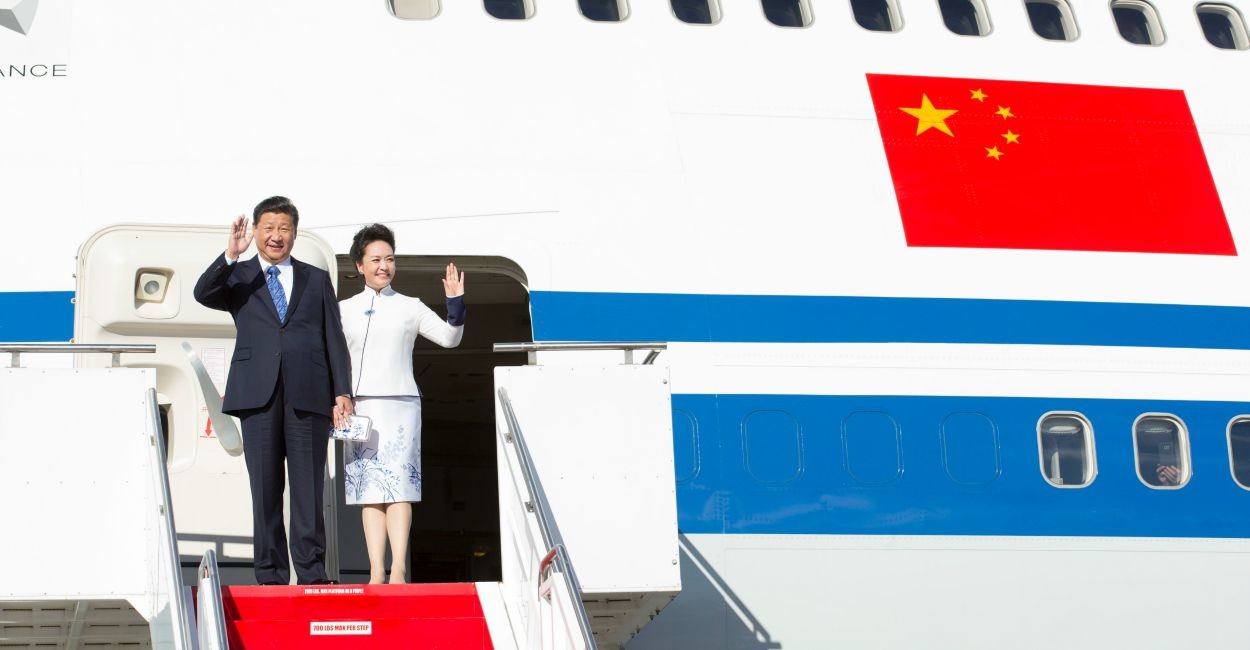 The cover story of the Fall 2011 issue of this magazine was titled, "A Defining Moment: How the American South is beating China at its own game." I wrote that story in response to one of the most important economic development documents ever written as it applies to the South — the Boston Consulting Group (BCG) study titled "Made in America, Again."
The cover story of the Fall 2011 issue of this magazine was titled, "A Defining Moment: How the American South is beating China at its own game." I wrote that story in response to one of the most important economic development documents ever written as it applies to the South — the Boston Consulting Group (BCG) study titled "Made in America, Again."
BCG's blockbuster "Made in America, Again" was one of the first comprehensive documents on reshoring, and the consulting firm has been outstanding at publishing followups on the trend. There is no question that reshoring -- particularly from China -- is real. Yet, pure reshored job creation (jobs created by companies reshoring plants to the U.S. from other countries that they offshored those plants to years before) stands at only about 25,000 in the South according to the Reshoring Initiative. Granted, those 25,000 Southern jobs represent more reshored jobs than the rest of the U.S., Canada and Mexico combined have captured from 2010 to 2014. But, it is a drop in the bucket compared to the 760,000 manufacturing jobs created in the U.S. as a whole since 2010.
It is very difficult to determine what is a "reshored" plant and what is not. For example, what do you call Mercedes-Benz moving production of the new C-Class model from Germany to its plant in Alabama? What do you call Canada-based Methanex's decision to disassemble two methane plants in Chile and reassemble them in Louisiana at a cost of billions of dollars just to cozy up to the cheapest natural gas in the world? Finally, Caterpillar moved production of tractors and excavators from Japan to Athens, Ga., in 2013. What do you call that move? In every case, those products had never been manufactured in the region until today, so they can't be deemed reshored facilities.
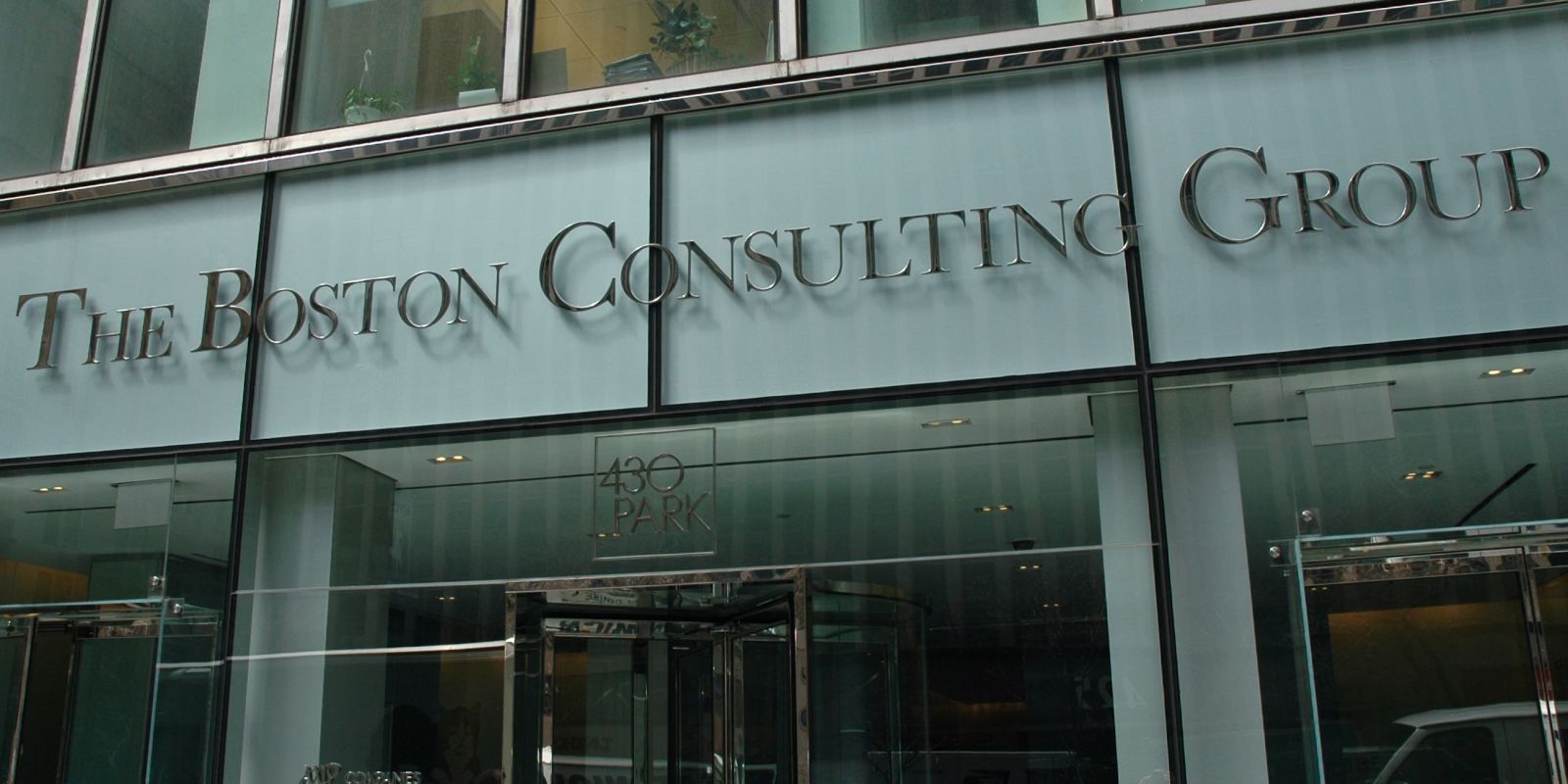 I now simply maintain that this manufacturing uptick we have seen since 2010 is a result of the South and other parts of the U.S. becoming much more cost-competitive. Yes, reshoring is real, but it is a small part of this manufacturing revival. Call it what you will -- reshoring, onshoring, nearshoring, make it where you sell it, it doesn't matter -- the heart of the issue is that parts of the U.S., and the South in particular, have become keenly competitive when it comes to operating costs for manufacturers, and cheap energy is driving that cost advantage.
I now simply maintain that this manufacturing uptick we have seen since 2010 is a result of the South and other parts of the U.S. becoming much more cost-competitive. Yes, reshoring is real, but it is a small part of this manufacturing revival. Call it what you will -- reshoring, onshoring, nearshoring, make it where you sell it, it doesn't matter -- the heart of the issue is that parts of the U.S., and the South in particular, have become keenly competitive when it comes to operating costs for manufacturers, and cheap energy is driving that cost advantage.
As we all know by now, the 2011 BCG document "Made in America, Again," explained how China has become much less competitive for multinational manufacturers, notably those who mass-produce for North American consumption. The report pointed out that when you combine shipping costs, long supply chains that create slower deliveries, intellectual property risks and rising overall operating costs (labor, energy, land and building costs), the cost to produce in China is about on par with the U.S., according to BCG. However, today, it costs less overall to manufacture in the American South than it does in China if the product is made for U.S. consumption. That cost advantage is creating some interesting shifts in global economics. In fact, one of those shifts is flushed in irony.
The bleeding has stopped!
According to the Economic Policy Institute, U.S. jobs outsourced to China from 2001 to 2014 totaled 3.2 million. Of those, 2.4 million jobs were in the manufacturing sector. Approximately 1.1 million of those offshored manufacturing jobs to China came from the American South. Simply put, the U.S. was not competitive with China regarding costs to manufacture, particularly in labor costs, until about 2010. By then, labor costs in China were rising rapidly. Also in 2010, widespread hydraulic fracturing created an energy upperhand for the U.S. that can't be duplicated anywhere else in the world.
According to the Reshoring Initiative, the bleeding of manufacturing jobs that came from offshoring has stopped. Their data shows that in 2003, 150,000 manufacturing jobs were offshored and just 2,000 were reshored. Conversely, in 2013 (latest data available on Reshorenow.org) there were an estimated 40,000 offshored manufacturing jobs and 40,000 reshored jobs. And of those 40,000 reshored jobs, approximately 90 percent came from plants returning from China.
Here come the Chinese
Over the course of more than 15 years, economic development officials in the South took hundreds of industrial recruiting trips to China in efforts to capture Chinese investments in the region. And for almost that entire time, those same officials had little, if anything, to show for their efforts.
Want proof that Southern economic developers were chasing ghosts in China from the mid-1990s to 2010? Okay, go ahead and name a Chinese-owned brand that's made in the South? Tick. . .tick. . .tick. You can't, can you?
Okay, now name a German, Japanese, British or Korean-owned brand made in the South? Those are easy. How about Mercedes-Benz, Toyota, BP and Hyundai? And there are many more, including BMW, Nissan, GlaxoSmithKline and Samsung.
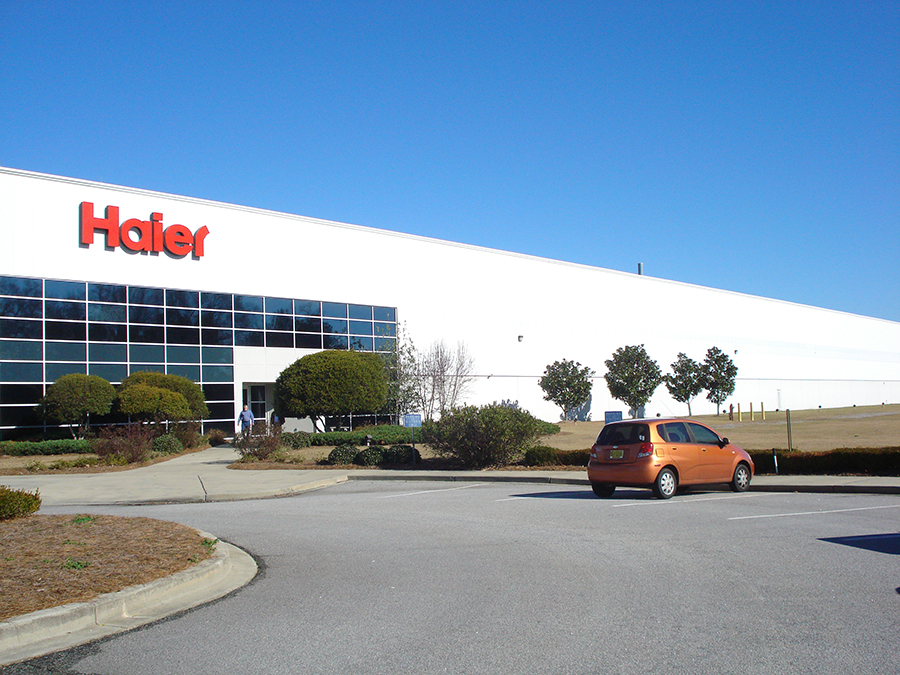
In North Carolina, Lenovo builds personal computers. The Chinese company purchased IBM’s personal computer division in 2005 and today Lenovo is the No. 1 PC manufacturer in the world.
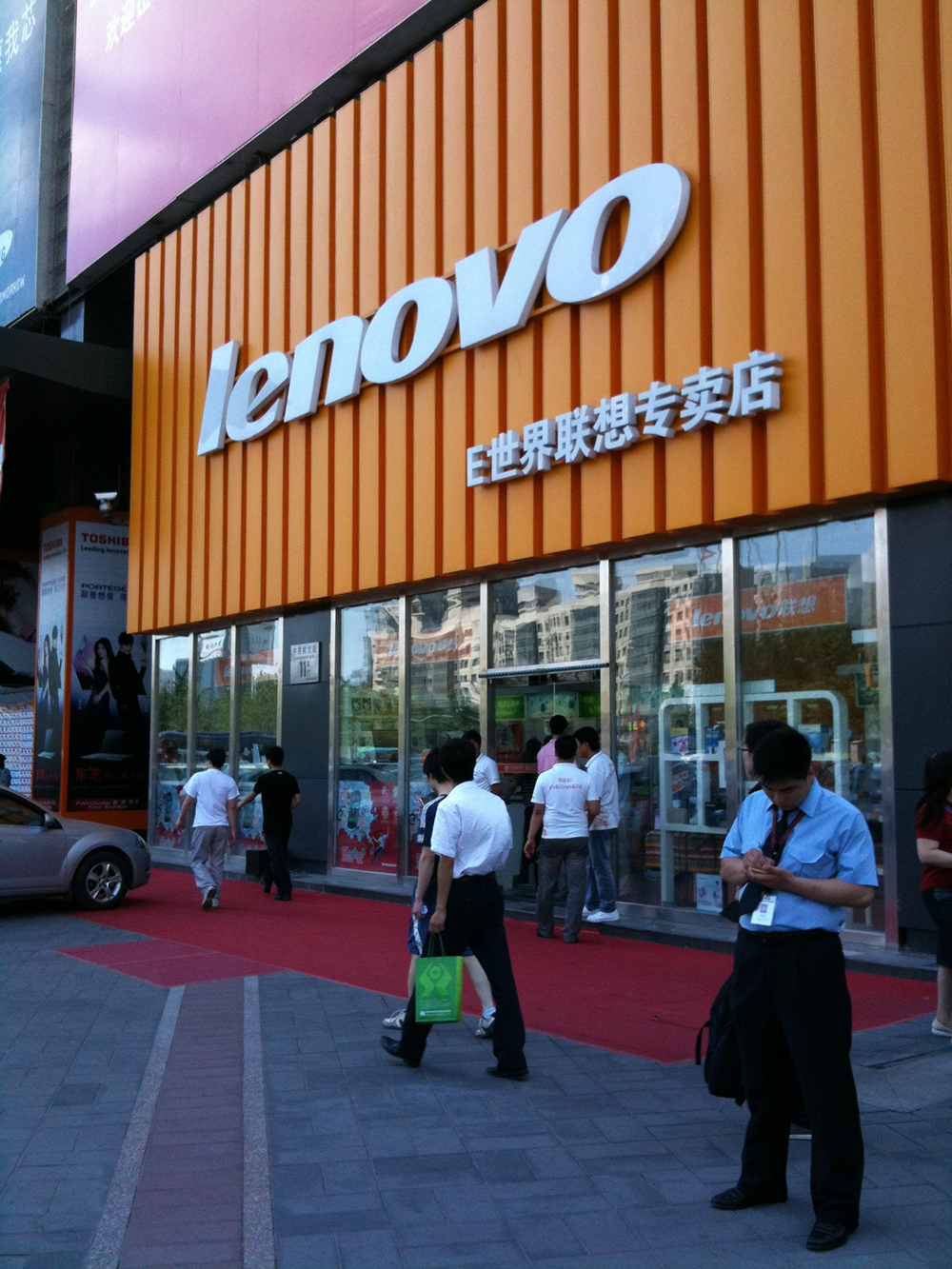 Until recently, the Chinese have been no-shows when it came to investing in the South, and in North America as a whole for that matter. On average from 2000 to 2009, Chinese companies invested about $1.7 billion a year in the U.S. That's the total investment of one very small petrochemical plant in Louisiana today. Strictly speaking, Chinese investment in the U.S. was chump change. . .until recently.
Until recently, the Chinese have been no-shows when it came to investing in the South, and in North America as a whole for that matter. On average from 2000 to 2009, Chinese companies invested about $1.7 billion a year in the U.S. That's the total investment of one very small petrochemical plant in Louisiana today. Strictly speaking, Chinese investment in the U.S. was chump change. . .until recently.
Yes, today there is a new player in the outbound foreign direct investment game in the American South, joining Germany, Japan, South Korea, Canada, The Netherlands and others that continue to pour cash and create jobs in the region. Investments made by Mainland Chinese companies and governments, long sought after by economic development officials in the South, are far-and-away the fastest growing source of FDI in the region. And if some predictions come true, China will soon be the largest foreign direct investment source for the South.
According to the Rhodium Group, a New York-based research company that publishes the China Investment Monitor, China has invested through acquisitions and greenfield projects over $54 billion in the U.S. since 2000. That’s not an astounding figure considering Japan invested $33 billion in the U.S. last year alone. However, of that $54 billion, $41 billion has been invested in the U.S. by private and government-owned Mainland Chinese companies from 2012 to the second quarter of this year. Chinese investment in the U.S. totaled $12 billion in 2014, $14 billion in 2013 and $15 billion in 2012. And as of the end of the second quarter of 2015, about $7 billion has been invested by the Chinese in the U.S., a pace that matches the previous three years. There is no question that in the third quarter of this year, investment sourced from China spiked, even though the totals are not available. So clearly, Chinese investment activity is off the charts compared to historical annual U.S. averages.
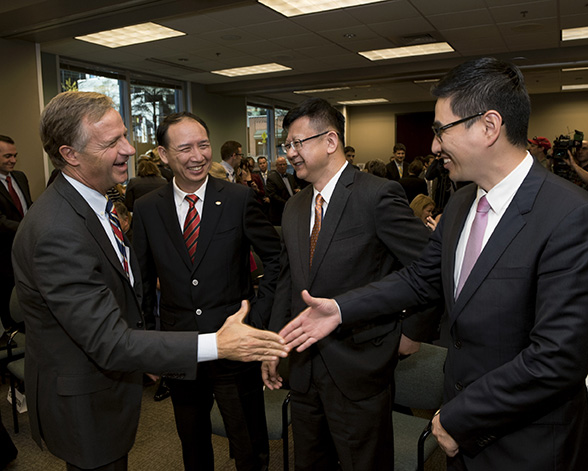 In fact, there was a week in November when Tennessee landed two large China-based projects. Sinomax, a Chinese foam products manufacturer, is investing $28 million and hiring 350 workers in a new plant in LaVergne, Tenn., and China-based Wonderful Group, a maker of tile and ceramics, will invest $150 million and hire 220 for a new plant in Lebanon, Tenn. I can write with certainty that in my 32 years of monitoring economic development in the South, there has never been a week when two big China-based deals were announced.
In fact, there was a week in November when Tennessee landed two large China-based projects. Sinomax, a Chinese foam products manufacturer, is investing $28 million and hiring 350 workers in a new plant in LaVergne, Tenn., and China-based Wonderful Group, a maker of tile and ceramics, will invest $150 million and hire 220 for a new plant in Lebanon, Tenn. I can write with certainty that in my 32 years of monitoring economic development in the South, there has never been a week when two big China-based deals were announced.
Then, just as this issue was going to press, Arkansas Gov. Asa Hutchinson signed a letter of intent with China-based Shandong Sun Paper Co. to work together in opening a $1.3 billion pulp mill to be located in an unnamed location in south Arkansas. The letter of intent sets a May 1, 2016 date to pick a site in the state. The factory, if built, will produce fluff pulp used in diapers and other products.
While a letter of intent is an unusual thing to make public in an economic development deal, the parties at the announcement were certainly impressive. Joining Gov. Hutchinson, other Arkansas officials and Sun Paper officials were U.S. Secretary of Commerce Penny Pritzker and U.S. Consulate General Charles Bennett.
Chart No. 1
Cumulative Chinese Greenfield & Acquisition Deals in the U.S. 2000 to Q2 2015
2000: 16 Deals. Value: $68m
2001: 37 Deals. Value: $116m
2002: 60 Deals. Value: $219m
2003: 83 Deals. Value: $286m
2004: 121 Deals. Value: $473m
2005: 167 Deals. Value: $2.5b
2006: 206 Deals. Value: $2.7b
2007: 276 Deals. Value: $3.0b
2008: 339 Deals. Value: $3.8b
2009: 422 Deals. Value: $4.5b
2010: 532 Deals. Value: $9.0b
2011: 657 Deals. Value: $13.9b
2012: 751 Deals. Value: $21.4b
2013: 868 Deals. Value: $35.7b
2014: 1,029 Deals. Value: $47.6b
2015Q2: 1,117 Deals. Value: $54.0b
Source: Rhodium Group. Deals with a value of $500,000 or more.
The largest Chinese project announced during the last three years in the South was Shandong Tranlin Paper’s $2 billion factory in Chesterfield County, Va. A couple of economic development officials in Virginia told me the big Chinese deal, announced in the summer of 2014, might not get off the ground. However, in October, the company did break ground on the plant that is expected to house 2,000 workers by 2020. “Every state wanted this project,” Virginia Gov. Terry McAuliffe said at the groundbreaking in a story published by the Richmond Times Dispatch. “This is the largest greenfield project ever done by a Chinese company in the United States of America.”
 So, really, for the first time in history, China is playing a direct role in the U.S. economy from a job and investment generating position. The number of Chinese-owned companies now operating in the United States at the end of the second quarter of this year is estimated by the Rhodium Group to be at 1,617. Those companies are employing approximately 90,000 Americans. Employment in China-owned companies, according to Stephen A. Orlins, President of the National Committee on United States-China Relations, is expected to quadruple over the next five years. Just five years ago, Chinese-affiliated companies employed just 15,000 workers in the U.S.
So, really, for the first time in history, China is playing a direct role in the U.S. economy from a job and investment generating position. The number of Chinese-owned companies now operating in the United States at the end of the second quarter of this year is estimated by the Rhodium Group to be at 1,617. Those companies are employing approximately 90,000 Americans. Employment in China-owned companies, according to Stephen A. Orlins, President of the National Committee on United States-China Relations, is expected to quadruple over the next five years. Just five years ago, Chinese-affiliated companies employed just 15,000 workers in the U.S.
So far in this three-year Chinese investment run in the U.S., most of the job and investment creation has been done through acquisitions of existing U.S. companies, several of which were saved from bankruptcies after being purchased. Of the current 90,000 employed by Chinese-owned companies in the U.S., only about 10,000 jobs have been created by greenfield projects. However, greenfield projects are expected to increase dramatically as China eases further into the American business culture, something that other Asian investors in the U.S. — like Japan in the late 1970s and the early ‘80s and South Korea in the 1990s and early 2000s — had to work through.
When Chinese acquisitions began to occur in earnest three years ago, officials in the South were concerned that the companies and the jobs would then be relocated to China. That has not occurred, says the Rhodium Group. According to the company’s report, “New Neighbors,” acquisitions have led to expansions in most cases, and examples of downsizing or relocating to China have been rare. “Fears that Chinese acquirers could systematically move acquired assets and related jobs back to China have not materialized. Instead, new Chinese owners have, in most cases, sustained and expanded local employment after they acquired U.S. assets,” as written in the “New Neighbors” report.
One Southern company that has been acquired by a Chinese firm is Virginia-based Smithfield Foods, the world’s largest pork producer. Purchased two years ago by Shuanghui, which changed its name to WH Group, Smithfield Foods has expanded its workforce by 1,300 since the purchase of the company, bringing total employment to 48,000 worldwide. Smithfield also reached the $15 billion mark in sales in 2014, a company record.
There was a concern by some officials that WH Group would relocate Smithfield Foods’ headquarters and thousands of jobs from the tiny town of Smithfield, Va. But the company promised to keep the current management team in place, and promised not to cut wages and benefits. WH Group also promised to keep Smithfield’s headquarters in Smithfield, and on all counts the company has kept its promises.
Chart No. 2
Total Chinese Deals 2000 to 2015Q2 in the U.S. by Industry Sector
IT & Communications 177
Energy 120
Real Estate & Hospitality 110
Automotive 105
Consumer Products 100
Transportation 89
Health & Biotech 81
Industrial Machinery 75
Financial & Business Services 62
Electronics 55
Basic Materials 43
Entertainment 33
Metals & Minerals 32
Agriculture & Food 19
Aviation 16
Source: Rhodium Group. Deals with a value of $500,000 or more.
A skeptical America?
Most Americans are not aware of this surge in Chinese investments in the U.S., specifically in the American South, over the last three years. At some point, when the media at large writes more about China’s new love affair with investing in the U.S. — in manufacturing, services and real estate — many in the U.S. will be skeptical. After all, as American companies invested hundreds of billions in plant capacity in China for two decades, it was at the expense of millions of jobs in the U.S. At the same time, the Chinese essentially invested nothing here. For years, it was a one-sided financial affair between the two largest economies in the world.
The fact that so many jobs were lost to China from the early 1990s to 2010 will never be forgotten by many Americans. Add the fact that China’s economic and political cultures are vastly different from those of the U.S., and there will be a reckoning across a wide range of issues if the Chinese want to be successful in the U.S. In short, U.S. companies play by Chinese rules when operating in China. Now that Chinese companies are landing in the U.S. in record numbers, those same companies and their leaders are going to have to play by U.S. rules through learning and abiding by the American business culture.
So far, though, Chinese companies that have invested in the South have been playing by U.S. rules. In the few areas that have landed significant Chinese investments, the local sentiment has been very positive and very accepting of Chinese ownership of local employers.
To date, the South leads all U.S. regions in Chinese investment
Not unlike its Asian neighbors South Korea and Japan, China prefers the American South over other U.S. regions when it comes to its investments. The South ranks No. 1 overall in Chinese investment with $17.3 billion investment from 2000 to 2014. Chinese companies employ more than 30,000 workers in the South, about one-third of the total nationwide.
Some of the largest China-owned companies are the aforementioned Smithfield Foods and Lenovo. Every Southern state is home to Chinese companies, but to date, Southern North Carolina, Eastern Virginia, Eastern Kentucky, the Research Triangle and Houston have seen the most investment activity in the South. Of late, Tennessee, South Carolina, Louisiana, Oklahoma and Texas have landed some significant greenfield projects.
Chart No. 3
Chinese Investment in Selected Southern States
State *Investment
Alabama $320m
Arkansas $14m
Florida $230m
Georgia $315m
Kentucky $260m
Louisiana $520m
Mississippi N/A
Missouri $860m
North Carolina $5.5b
Oklahoma $1.6b
South Carolina $450m
Tennessee $340m
Texas $5.6b
Virginia $2.2b
West Virginia N/A
*Investment totals from 2000 to 2014. Source: The Rhodium Group.
Why Chinese investments are growing so fast in the South
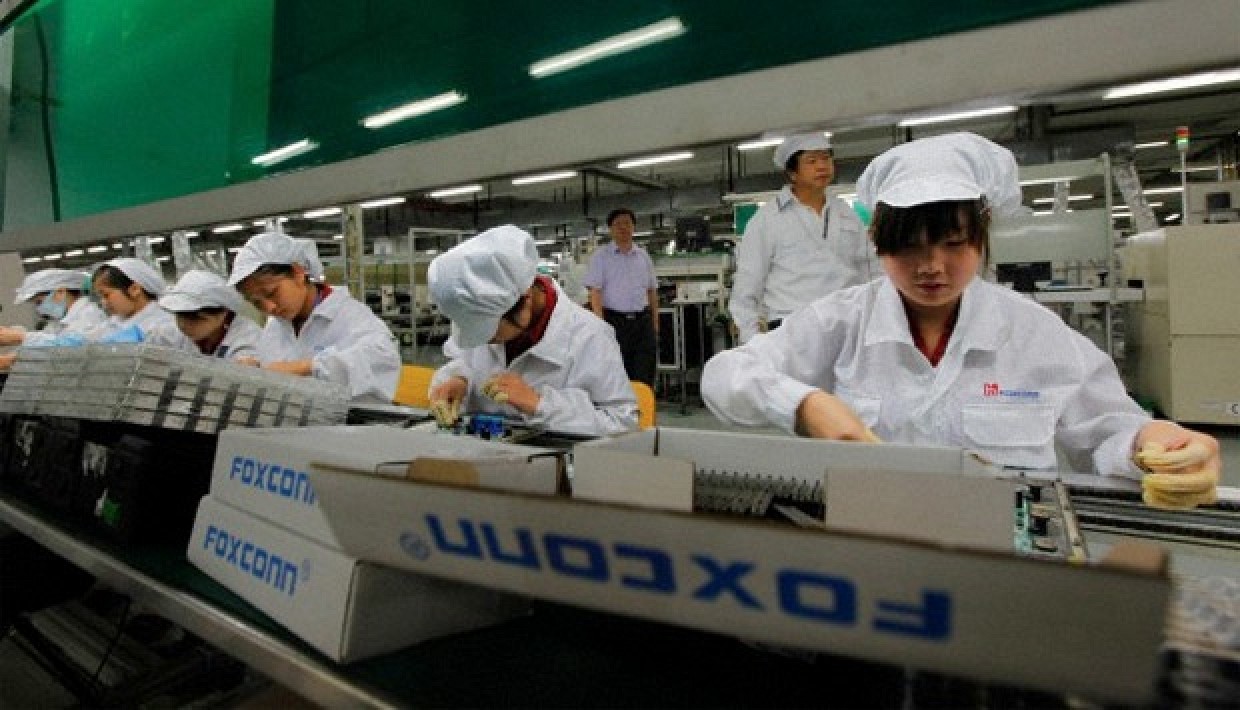 There is no question that reshoring, onshoring, nearshoring, make it where you sell – whatever you want to call this economic shift in manufacturing capacity – is driving this Chinese investment run in the South and in the U.S. For example, if it is getting more difficult to make a profit in manufacturing many products in China for U.S. consumption, wouldn’t it make sense for Chinese manufacturers to offshore production to North America? Also, if it is getting more expensive to manufacture in China, where does that leave Chinese manufacturers? It puts them in the same position as those companies who are reshoring to the U.S. They are doing it for economic reasons.
There is no question that reshoring, onshoring, nearshoring, make it where you sell – whatever you want to call this economic shift in manufacturing capacity – is driving this Chinese investment run in the South and in the U.S. For example, if it is getting more difficult to make a profit in manufacturing many products in China for U.S. consumption, wouldn’t it make sense for Chinese manufacturers to offshore production to North America? Also, if it is getting more expensive to manufacture in China, where does that leave Chinese manufacturers? It puts them in the same position as those companies who are reshoring to the U.S. They are doing it for economic reasons.
Labor costs in China remain well below those in the U.S. However, Chinese labor costs, depending on where you are in the country, have in some cases grown 15 times what they were just eight years ago. But this shift is much more complicated than rising Chinese labor costs. The energy advantage the U.S. has over almost all nations is the key driver. For example, electricity for large loads seen at manufacturing plants is anywhere from 4 cents to 6 cents per kilowatt-hour at peak usage in the South. Depending on where you are in China, a kilowatt-hour at peak usage is 12 to 16 cents.
Additionally, land costs in large manufacturing cluster cities in China such as Shenzhen (where major contract manufacturer Foxconn employs hundreds of thousands of workers), Shanghai, Dongguan, Tianjin and Guangzhou are on average five times the cost of industrial land in the American South.
And there is something else that is happening in China that hasn’t occurred in more than two decades. China’s domestic economy has slowed fairly dramatically in the past two years. Their domestic demand for steel, cement, aluminum, building materials and other products has declined, leaving many of those sectors with excessive capacity. By boosting outbound foreign direct investment to countries like the U.S., where demand for those products is still fairly robust, China can outsource and offshore the excessive capacity it has in its own country.
So, rising costs in just about every factor of doing business in China is without question forcing
China businesses to find cheaper places to operate both service and manufacturing operations, and so far, the Chinese are finding the U.S. – specifically the American South – as a low-cost location.
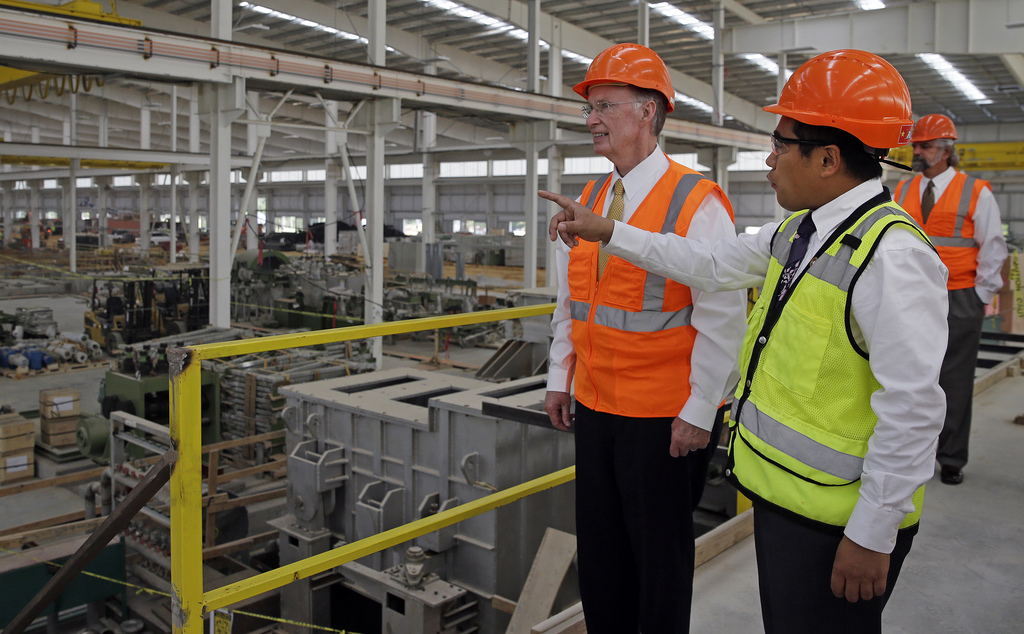
Chart No. 4
Selected China-Owned Greenfield Projects in the South
ABC Group Fuel Systems -- Gallatin, Tenn.
American Yuncheng Gravure Cylinder – Spartanburg, S.C.
BOGE Rubber & Plastics -- Hebron, Ky.
Fine Furniture & Design -- High Point, N.C.
Golden Dragon Precise Cooper Tube -- Wilcox County, Ala.
Haier -- Camden, S.C.
Jetion Solar -- Charlotte, N.C.
Keer Group -- Indian Land, S.C.
Peak Corporation -- Manning, S.C.
Sany Group -- Peachtree City, Ga.
Seraphim Solar Manufacturing USA -- Jackson, Miss.
Shandong Swan USA -- Montgomery, Ala.
Shandong Tranlin Paper -- Richmond, Va.
Suzhou Glacier Import & Export -- Travelers Rest, S.C.
Tianjin Pipe Group – Corpus Christi, Texas
Volvo Cars -- Berkeley County, S.C.
Wonderful Group -- Lebanon, Tenn.
Yanfeng Auto USA -- Chattanooga, Tenn.
Yuhuang Chemical -- St. James Parish, La.
Source: Rhodium Group
Costs are arguably the driver in the rise in outbound Chinese investments. However, as we all know, many of China’s companies are government-backed or owned. Let’s not forget that China remains a communist country and companies generally and historically have to gain government approval – municipal, provincial and/or central – to do almost anything. But the easing of that approval process may be the second most important factor in China’s investment strategy in the U.S.
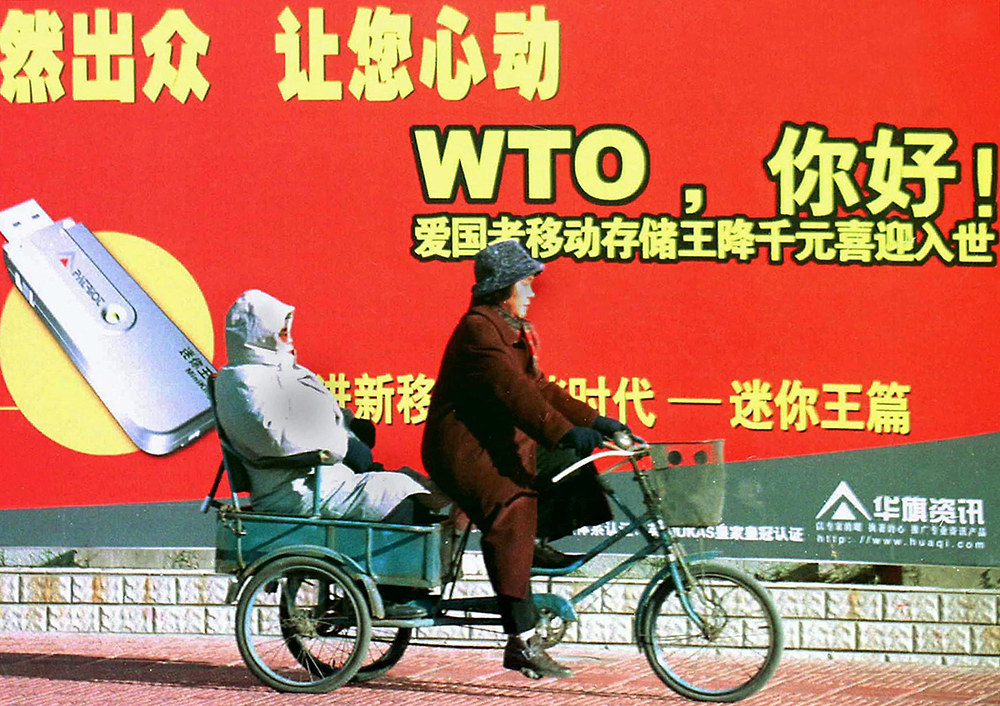 China joined the World Trade Organization in 2001. In anticipation of entry into the WTO, Chinese policy makers began modifying their stances on outbound foreign direct investment in 2000. At the time, China had little reason for a “go-out” strategy since the average manufacturing wage in the country was 58 cents an hour, making it impossible for developed countries to compete in the manufacturing sector. Regardless, the first “go-out” strategies were being developed by Chinese governments and the People’s Bank of China as far back as 15 years ago.
China joined the World Trade Organization in 2001. In anticipation of entry into the WTO, Chinese policy makers began modifying their stances on outbound foreign direct investment in 2000. At the time, China had little reason for a “go-out” strategy since the average manufacturing wage in the country was 58 cents an hour, making it impossible for developed countries to compete in the manufacturing sector. Regardless, the first “go-out” strategies were being developed by Chinese governments and the People’s Bank of China as far back as 15 years ago.
By 2007, China had amassed large foreign exchange reserves and a new regulatory environment emerged in 2009 that decentralized the approval process for outbound investment. In 2011, the People’s Bank of China announced new rules for promoting foreign direct investment outflows. By 2013, further easing of application procedures was put in place by the State Council for outbound foreign direct investment. Simply put, governments in China are now encouraging ODI like never before, making it much easier to invest outside the country, particularly for privately owned Chinese enterprises. As a result, China’s “going-out” policy has accelerated and it is widely believed by economists both in China and in the U.S. that it will keep accelerating, even compounding.
In fact, Chinese outbound foreign direct investment has accelerated so fast that something happened last year for the first time ever. According to the Ministry of Commerce of the People’s Republic of China, China’s outbound foreign direct investment (ODI) exceeded China’s inbound foreign direct investment (FDI) for the first time in 2014. At $119.6 billion, China is one of the largest inbound FDI nations in the world. However, figures show that China’s outbound FDI totaled over $120 billion in 2014, a slightly larger total than its inbound total.
Also, while the U.S. is by far the largest foreign direct investor in the world at $338 billion, China’s $120 billion FDI total ranked third in the world, behind only Japan and the U.S. in 2014. China didn’t rank in the top 10 nations in the world in FDI just eight years ago.
Conclusion
This new strategy by Mainland China is an effort to globalize for the first time the second largest economy in the world. Chinese officials desperately want to become the largest economy in the world and rebalancing their economy through globalization is the fastest way to do it. "We're going to see an enormous wave of Chinese capital coming into the U.S.," said Christian Murck in a story published by the Greenville (S.C.) News in October. "It's only just begun." Murck is the former president of the American Chamber of Commerce in China.
How ironic that just a few years ago offshoring to China was the rage in the U.S. and because of it, this country simply gave up on the manufacturing sector? This combination of reshoring, onshoring, nearshoring, make it where you sell it – whatever you want to call it – and now offshoring to the U.S. by Chinese manufacturers (possibly at exponential rates in the near future) may indeed save manufacturing in this country for decades.